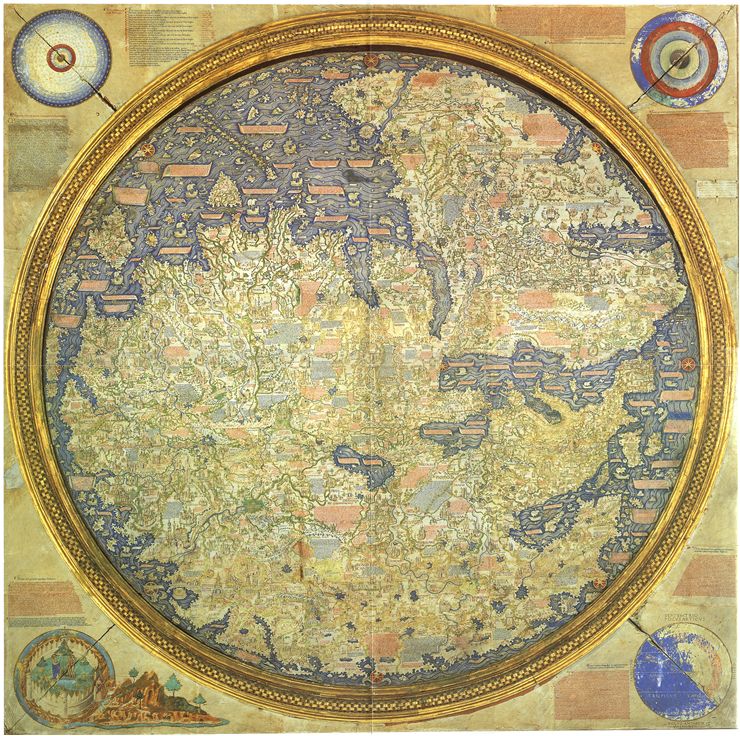Exploration of Asia between 4th century BC and 16th century AD
The largest continent in the world had long and storied history about the way its lands were discovered and charted. Even though several large empires were created in Asia thousands of years ago, for the longest time majority of its territory remained unexplored and unknown. The push for the more comprehensive knowledge of Asian geography started intensifying with the establishment of the first trade routes between Asia and Europe, and with wishes of Chinese royalty and nobility to put stronger grip on sea trade routes in Chinese and Indian sea. The majority of interesting exploratory missions in Asia (first on land and later on the sea) happened between 4th century BC and 16th century AD.
Exploration of Asia can most easily be separated into several different categories such as European overland exploration of Asia, Chinese exploratory missions outside of Chinese territories, and sea exploration that started after Vasco de Gama discovered his famous all-sea route to India in late 15th century. The earliest example of European travels to the Asia goes all the way back to around 515 BC and the famous Greek explorer and writer Scylax of Caryanda. One of his most famous journeys brought him to the river Indus, Indian Sea, Red Sea and finally to the western end of Suez. Two centuries later, Alexander the Great conquered the parts of Central Asia, but he and his successors were unable to hold those territories for long. Between 250 BC and 30 BC, several missions enabled creation of long-term trade relations between Greek, Rome, Egypt and several cities in India. Some of the most important events from that time were establishing of trade between Seleucid Empire and Indian Maurya Empire in 300 BC, 250 BC incursion into Punjab Region and Central Asia, and Roman control of Spice Trade via their rule of Egypt. Because of the Roman control of Spice trade, Byzantine Empire managed to hold good trade relations with India all up to mid-7th century AD when Arabs conquered Egypt and thus disrupting the flow of Asian trade to Europe.
The two of the most famous early Chinese explorers are Zhang Qian and Xu Fu. Famous diplomat and explorer Zhang Qian was ordered by the Han dynasty to explore not only territories controlled by China, but also rest of Eastern Northern Hemisphere. During his travels he encountered many countries that China was unaware off (such as Dayuan, Kangju, Daxia, Shendu, Anxi), and even discovered remnants of the conquests made by Alexander the Great. While Zhang Qian trained his entire life to be as best explorer and diplomat as possible, Xu Fu had other goals. He was famous as a “court sorcerer” in Qin Dynasty. Between 219 and 210 BC he performed two exploratory trips into Eastern Seas, with a goal to find fabled elixir of eternal life. On his first trip he carried with him 60 ships, 5 thousand crew members, 3 thousand boy and girl servants and many craftsmen. He presumably died near or on the coast of the modern-day Japan.
After the pressure of Arabs in northern Africa and Middle East lessened, the trade between Asia and Europe continued, leading to the height of the Silk Road trade in 13th century. It was during that time that many other European explorers got their chance to explore previously unknown regions of Asia, including Italian Franciscan Giovanni da Pian del Carpine who visited Mongolia between 1245 and 1247, Italian Ascelin of Lombardia who visited Armenia and Persia in similar years, Flemish William of Rubruck reaching Mongolia through Central Asia, discoveries of Niccolò, Maffeo and Marco Polo between 1264 and 1295, and many others who managed to visit and explore Asia before the fall of Constantinople falls to the Muslim Ottoman Turks in 1453. This even again disrupted the trade routes of Europe to Asia, pushing the European Royal courts to start heavily investing into exploratory sea fleets that will soon discover more reliable ways to reach India.
